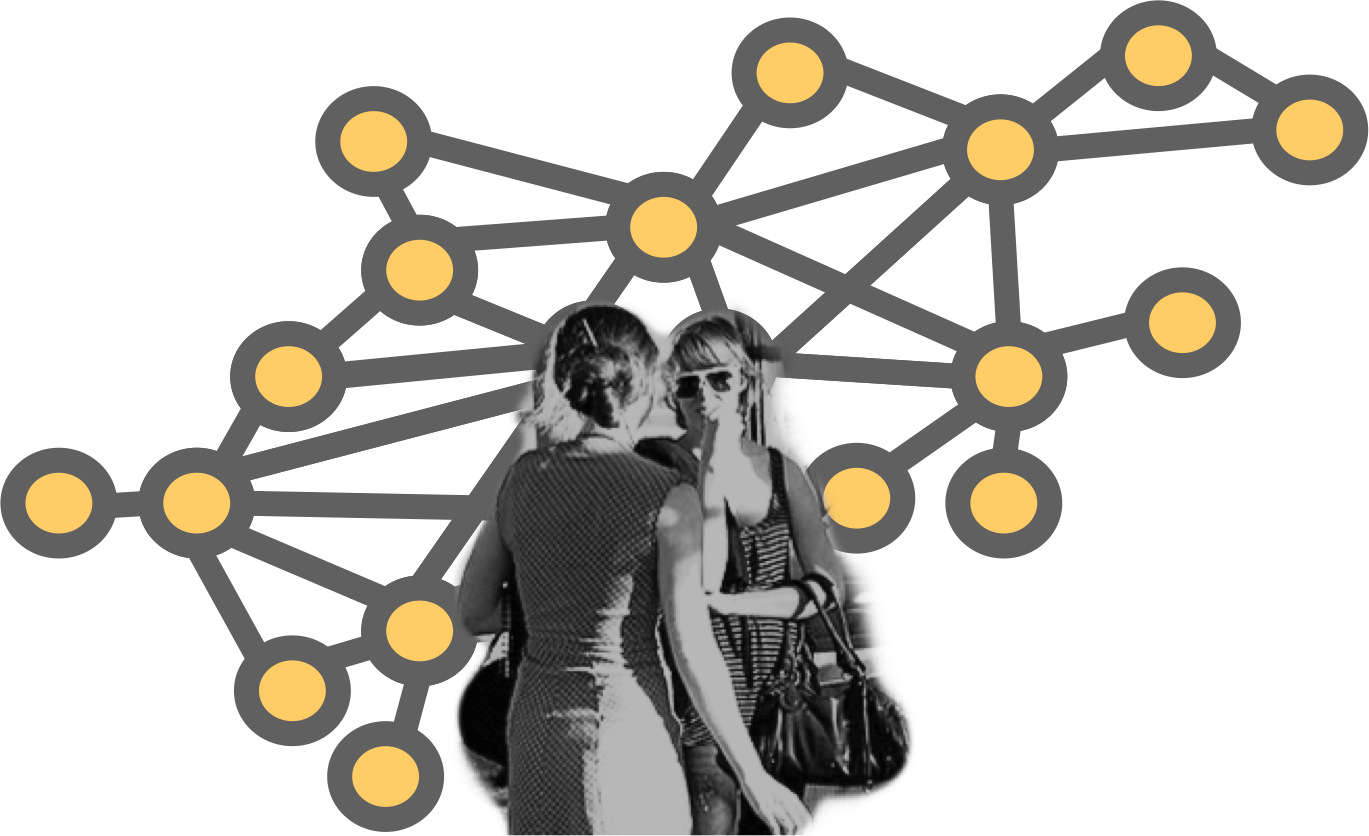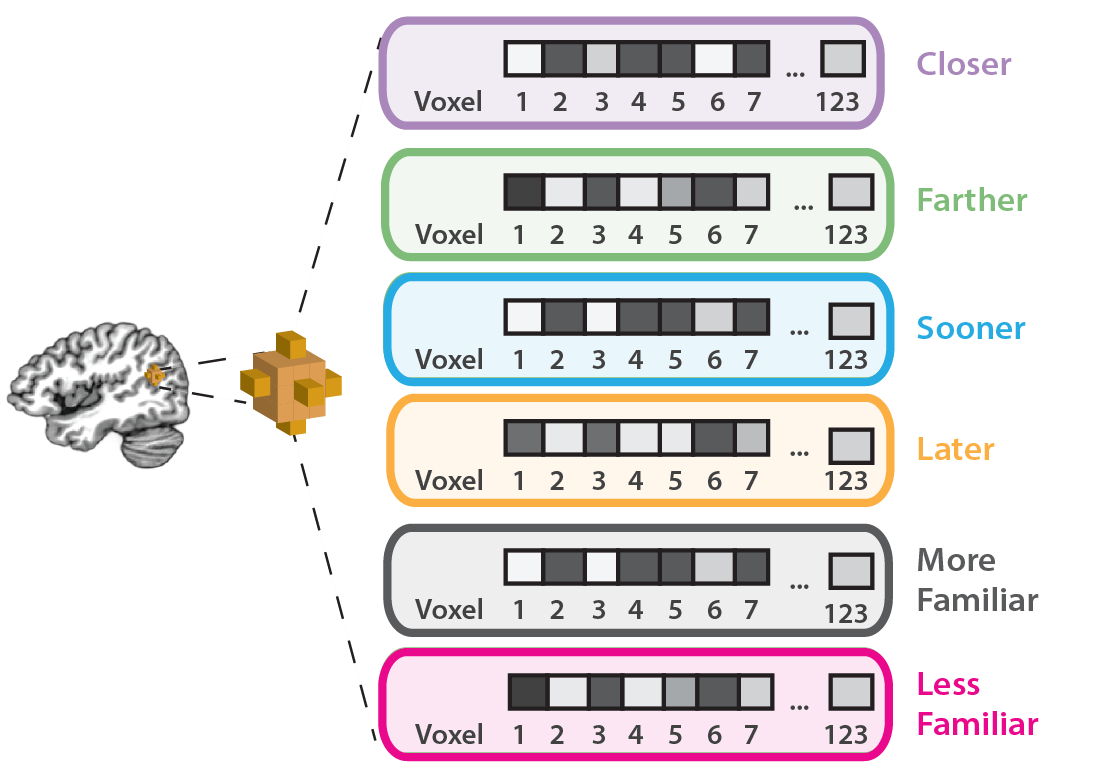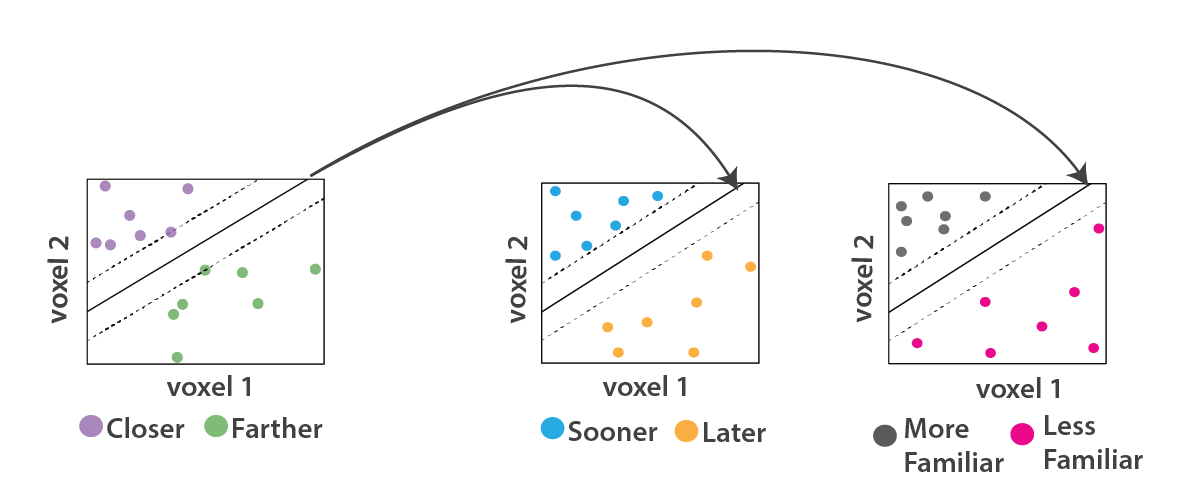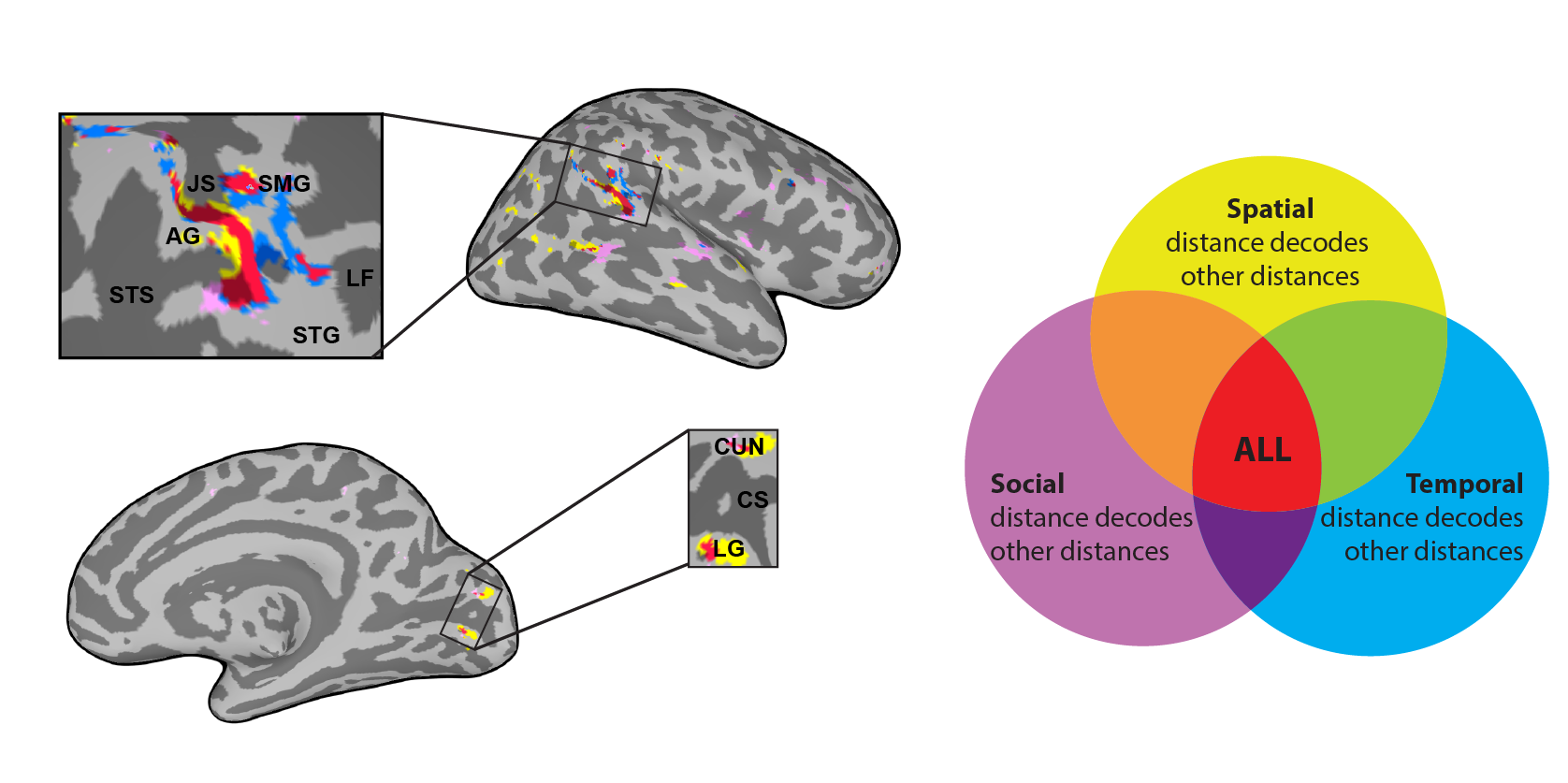Research Overview
Broadly, research in the Computational Social Neuroscience Lab investigates how our brains represent and navigate the social world. We take a multidisciplinary approach, drawing on theory and methods from cognitive neuroscience, machine learning, social network analysis, and social psychology.
As detailed below, some of the topics that we're currently investigating include: How do our brains track and encode information about the structure of our social networks? How are our thoughts and actions influenced by the social networks we inhabit? What predicts who ends up where in a social network, and who will connect with whom? How does the brain encode different kinds of distance from the self (e.g., distance in time, space, and social ties), and how does this information impact other mental processes? How can our perception of distance be warped by emotion and other situational factors? Do common neural mechanisms underlie social and non-social aspects of cognition?
SOcial Networks
How we interact with others depends on their relationships to us and to the networks of social ties in which we're all embedded: Social distance dampens our responses to others’ pain, learning that we have friends in common can instill trust in strangers, and knowledge about other people’s patterns of social connections informs everyday decisions about sharing, seeking, and withholding information.
Recently completed and ongoing projects investigate the neural architecture involved in encoding information about our real-world social networks, including our own relationships, bonds between third parties, and aspects of the overall network topology. In addition, we're investigating how this information affects our thoughts and actions, and if our brains automatically track and encode information about other people's social network positions in order to facilitate effective and beneficial social interactions.
Do we see and respond to the world exceptionally similarly to how our friends do? If so, is this because we tend to befriend others who see things as we do, or because we become more similar to our friends over time? In addition, how does our embeddedness within densely interconnected social networks extend the reach of our influence as individuals beyond the people with whom we interact directly? We're investigating these and related questions in order to better understand how humans shape and are shaped by the social networks that we inhabit.
Relevant publications
Parkinson, C., Kleinbaum, A. M., & Wheatley, T. (2017). Spontaneous neural encoding of social network position. Nature Human Behaviour, 1, 72.
Parkinson, C., Kleinbaum, A. M., & Wheatley, T. (2018). Similar neural responses predict friendship. Nature Communications, 9, 332.
Weaverdyck, M. E. & Parkinson, C. (2018). Neural representation of social networks. Current Opinion in Psychology, 24, 58-66.
Parkinson, C., Lynn, B., Kleinbaum, A. M., & Wheatley, T. (In revision). Social network position gates social attention in humans.
Psychological distance
HOW DO WE THINK ABOUT DIFFERENT KINDS OF DISTANCE FROM THE SELF?
Spatial metaphors for social and temporal distance (e.g., close friends, distant relatives, near future, distant past) may be more than just linguistic quirks. These widespread figures of speech appear to reflect 'figures of thought' that provide a window into how our brains are organized. We've found evidence that the relevance of information to our first-hand experience of the present (e.g., distance in space, time or social ties) is rooted in a common neural computation. This information appears to be encoded in a brain region with an evolutionarily ancient role in spatial cognition, suggesting that neural machinery for navigating space may have been repurposed over the course of human brain evolution to 'navigate' temporal and social frames of reference. Ongoing research investigates how distance from ourselves shapes what our brains represent about the world around us, and how our perception of distance can be warped by motivational factors, such as desire and fear.
Relevant publications
Parkinson, C., Liu, S., & Wheatley, T. (2014). A common cortical metric for spatial, temporal, and social distance. Journal of Neuroscience, 34, 1979–1987.
Parkinson, C. & Wheatley, T. (2015). The repurposed social brain. Trends in Cognitive Sciences, 19, 133–141.
Parkinson, C., & Wheatley, T. (2013). Old cortex, new contexts: Re-purposing spatial perception for social cognition. Frontiers in Human Neuroscience, 7, 645.
FINDING COMMON OPERATIONS ACROSS DOMAINS OF COGNITION
WHAT ARE THE CONSTITUENT COMPUTATIONS UNDERLYING SOCIAL COGNITION?
A theme that guides much of our research is the realization that functional brain organization does not necessarily match the commonsense categories that we use to reflect upon and discuss our experiences. Just as some aspects of social cognition that intuitively seem quite similar rely on separable neural systems (e.g., different kinds of moral judgments), some mental processes that tend to be studied as distinct phenomena (e.g., social and spatial distance evaluations) appear to be supported by common underlying neural mechanisms. Thus, some brain areas may be better described in terms of the computations that they perform across multiple domains of contents, rather than the particular categories of information (e.g., social or spatial) involved. Characterizing computational mechanisms based on observed neural responses requires not only mapping the brain regions involved in a given process, but also examining the structure of representations within those regions.
To better understand the computations that various brain regions contribute to social cognition, we probe the organization of information within brain regions using machine learning classifiers and by characterizing local representational geometry using representational similarity analysis. Using data analytic techniques like these, we can leverage the rich information contained in distributed patterns of brain activity to elucidate the rules governing local information processing, and ultimately, the computations that contribute to social cognition. By combining these approaches with behavioral paradigms designed to uncover associations between disparate domains of information, we hope to move towards an increasingly mechanistic understanding of how humans understand and navigate the social world.
Relevant Publications
Parkinson, C. & Wheatley, T. (2016). Reason for optimism: How a shifting focus on neural population codes is moving cognitive neuroscience beyond phrenology. Behavioral and Brain Sciences, 39, e126.
Sievers, B. R., Parkinson, C., Walker, T., Haslett, W., & Wheatley, T. (Under review). A universal energy code for emotion in sound, shape, and movement.
Sievers, B., Parkinson, C., Kohler, P.J., Hughes, J., Fogelson, S.V., & Wheatley, T. (Under review). Visual and auditory brain areas share a neural code for perceived emotion.
Parkinson, C., Liu, S., & Wheatley, T. (In prep.). A shared neural encoding of semantic similarity and physical proximity.
Parkinson, C. & Wheatley, T. (2015). The repurposed social brain. Trends in Cognitive Sciences, 19, 133–141.
Parkinson, C., Liu, S., & Wheatley, T. (2014). A common cortical metric for spatial, temporal, and social distance. Journal of Neuroscience, 34, 1979–1987.
Parkinson, C., & Wheatley, T. (2013). Old cortex, new contexts: Re-purposing spatial perception for social cognition. Frontiers in Human Neuroscience, 7, 645.





